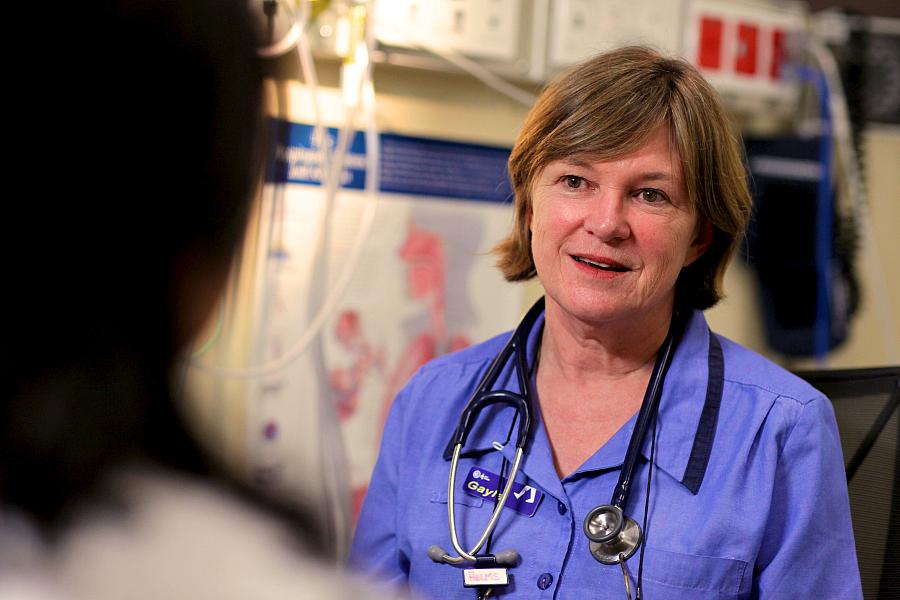Report: Expanding the role of nurse practitioners could ease care shortage, save billions

Granting nurse practitioners (NPs) the ability to practice independently – without the supervision of physicians — could save California $1.8 billion in the cost of preventative care visits over the first 10 years. That’s according to the Bay Area Council Economic Institute, whose April report also found that allowing NPs to diagnose and treat patients independently would result in almost 2 million more preventative care visits per year in that state, an increase of 10.3 percent.
Their analysis showed that the change would not only provide more preventative care and cost savings but also result in a 22 percent increase in the number of NPs practicing statewide. The recent California analysis concludes that the state should follow the lead of other states that grant full-practice authority to NPs — in the wake of recent legislation passed in Connecticut and Minnesota, the tally now stands at 19 states.
The report comes as the nation faces a critical primary care shortage that is expected to worsen as millions more newly-insured Americans seek care under the Affordable Care Act. One way to ease stress on the burdened system is greater use of NPs — registered nurses with additional graduate-level education such as a master’s degree.
But granting more autonomy to NPs isn’t without controversy. Physician groups point out that nursing education varies and they have significantly less clinical experience than primary care doctors, who attend four years of medical school and three years of specialized training. NPs need doctor oversight to practice safely, they contend.
(This 2013 research brief summarizes scope-of-practice laws throughout the country and the reimbursement policies that follow and here is an interactive chart that shows how scope of practice varies by state.)
As for the quality-of-care debate, advocates for greater independence for NPs point to studies that show outcomes don’t differ when patients are seen by a primary care physician or NP. Health Affairs, a peer-reviewed journal, said a review of 26 studies published since 2000 found that “health status, treatment practices and prescribing behavior were consistent between nurse practitioners and physicians.”
“Restricted scope serves as a detriment to care,” said Kenneth Miller, co-president of the American Association of Nurse Practitioners. “Patient care is delayed, conditions worsen and then it costs more.”
Miller’s group says NPs should be able to diagnose, treat and prescribe medications without physician oversight. If there’s a complex case, such as a patient with several serious diseases, NPs can still refer the patient to a physician or another NP who specializes in such cases. In general, NPs can handle 85 to 90 percent of physicians’ work, Miller said. (Medicare reimburses them at 85 percent of physicians’ pay, something Miller said his group would like to see increased).
But physician groups such as the California Academy of Family Physicians say doctors and NPs aren’t interchangeable, and that there are alternative ways of easing the primary care shortage.
“Nurses are nurses and doctors are doctors,” said Mark Dressner, a physician and the group’s immediate past president. “Nurse practitioners are really good, but their education is limited and they could miss unusual presentations … Lack of supervision could be dangerous.”
A key component of the debate is whether NPs are filling in gaps in underserved areas. This latest report says NPs are more likely than physicians to practice in counties that are rural or Health Professional Shortage Areas and are more likely to care for younger, female, non-white patients as well as individuals dually eligible for Medicare and Medicaid. In response, Dressner points to this map that shows the vast majority of NPs and physicians both tend to cluster in urban areas.
Creating more medical residency training programs, adding funding to such programs and improving reimbursements could all help ease the primary care shortage, Dressner said.
He points to a collaborative “patient-centered medical home” model where a team of caregivers — led by a physician — work together to more efficiently coordinate a patient’s primary care. NP advocates like Miller are on board with that approach, yet Miller prefers a “less hierarchical” vision where a team leader could be other providers such as a NP, dietician or physical therapist, depending upon the nature of the problem.
Other changes in health delivery ideas gaining traction nationwide include nurse-led clinics, where no physicians are present.
We’ll likely see more and more of this debate over the role of nurse practitioners as states struggle to fill the growing primary care gap and reduce rising costs of care. The topic is coming up this year in state legislatures across the country, including Connecticut and New Jersey.
Further reading: Check out these additional articles examining the scope-of-practice debate and the role of nurses in filling the primary care gap.
Update: This post has been amended to acknowledge the recent passage of legislation in Connecticut and Minnesota.
Photo by DIBP images via Flickr.

